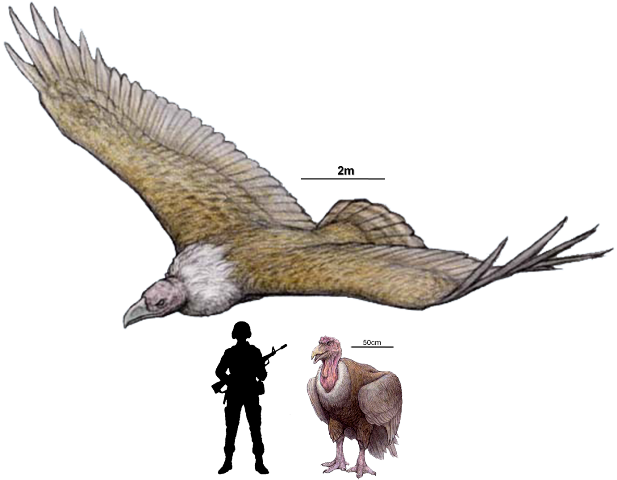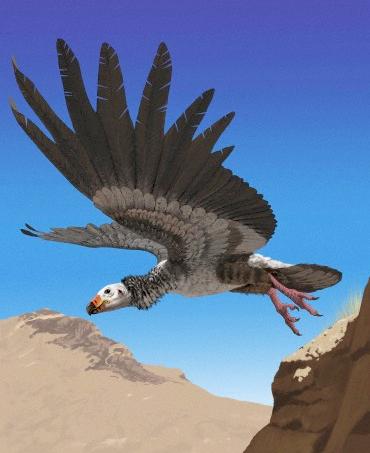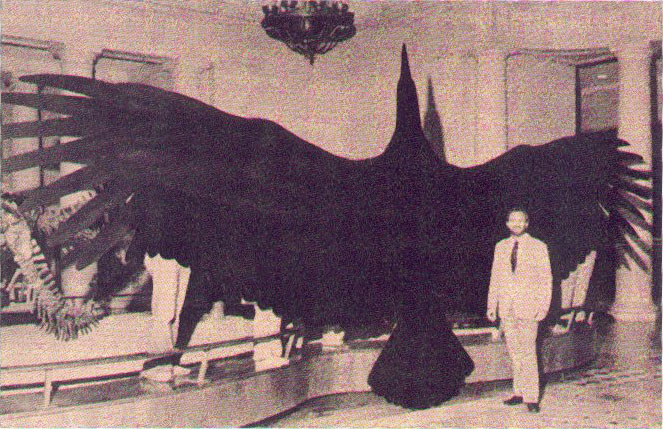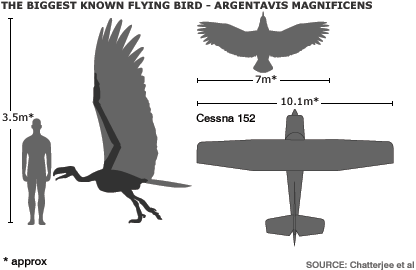Argentavis magnificens literally meaning the “magnificent argentine bird”, occasionally called the Giant Teratom is the largest flying bird ever explored which is now an extinct species. It probably had heavy, strong legs and large feet which enabled it to pace comfortably. The beak was largely flattened with a wide opened hooked tip.
The humerus (upper arm bone) of Argentavis is fairly damaged. It had an estimated wingspan of approx 7m(23 ft) with a wing area of 8.11m2(87.3 ft2).it had the body length and height of 1.26m(4.1 ft) and 1.7-2m(5.6-6.6 ft). It had an approximate weight of 70-78kg.They lived a maximum age of around 100years.
It laid one or two eggs each weighing over 1 kg in every 2 years. Argentavis hardly experienced any predation, and mortality was very low primarily from old age, accidents and disease.
They flew mainly by climbing, using flash flight and thermal currents only during short periods with the basic velocity of wings of about of 11 m/s or 40 kilometers per hour. Chiefly for departure, it depends on the wind which were simply too long to flap effectively until the bird was some meters off the ground. They also utilized mountain slopes and headwinds for the same by firmly sloping terrain with little efforts.
They travelled more than 500 square km to search food by eating the flesh of its prey without landing. Perhaps, they favored to roam for carrion especially for the metatherian carnivores.
Photos Of Argentavis magnificens





